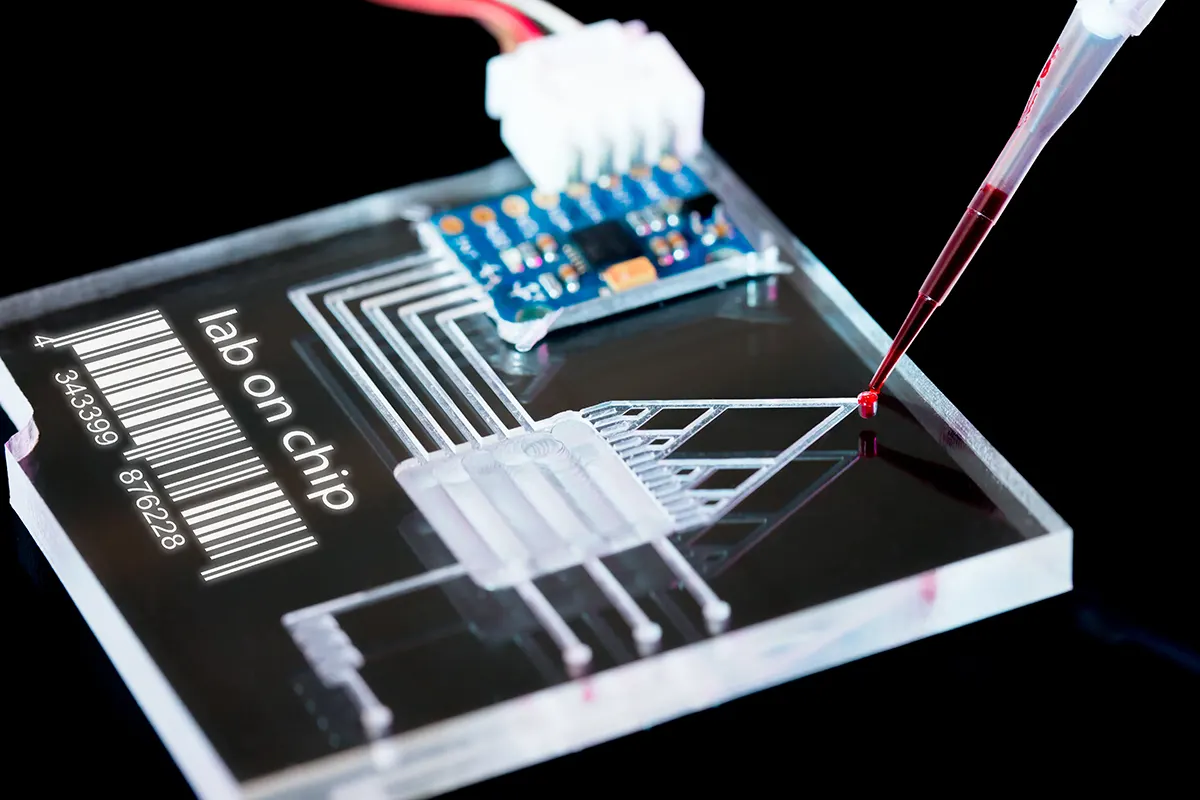Transition from Manual and Mechanical Controls to Electronic Precision and Automation

PVD coating techniques use physical processes to deposit thin films on surfaces. These films offer an extremely convenient way to obtain desirable surface characteristics without having to completely change the material of a product. The layers can be as thin as only thousandths of a nanometer and can transform all types of surfaces to resist corrosion, decrease friction, increase hardness, and much more.
In this article, we will explore the two most common methods of physical vapor deposition used to apply PVD coatings, thermal evaporation and sputtering deposition.
PVD method 1: Thermal evaporation
Thermal energy is used to vaporize the target material so it can be used to deposit thin film onto the substrate. Deposited materials may include pure metals, non‑metals, oxides, and nitrides. This process offers a high level of control over film properties like thickness, adhesion, stress, and grain structure. Compared to other PVD and CVD techniques, thermal evaporation has one of the highest deposition rates.
A typical thermal evaporation system consists of the following components:
- Substrate(s) and target
- Heat source
- Vacuum pump
- Pressure controller / Gate valve
- Deposition rate monitor
- RGA (optional)
Thermal evaporation requires a very high vacuum of about (1×10-6 to 1×10-9 Torr). The required vacuum level depends on purity needs and the required mean free path. While differing in some specifics such as level of vacuum, the following three steps are common to all thermal evaporation setups:
- Vaporization: The target material is first placed into a crucible at the bottom of the vacuum chamber. A heat source (tungsten filament or electron beam) is then used to sublime or boil the target material into a vapor.
- Transport from target to substrate: The vaporized target material forms a vapor plume which travels to the substrate, installed directly above the target. Maintaining a stable, high vacuum level ensures the environment is free from contamination, and a mean free path ensures a virtually collision‑free journey of the vapors from the target to the substrate.
- Deposition and nucleation: Since the substrate’s surface is at a relatively low temperature, the vapors condense when they come in contact with it. Condensation is followed by nucleation, creating the first thin film layer. This process is carried out until the desired film thickness is reached.
Thermal evaporation methods
Thermal evaporation also has subtypes, differentiated by method of vaporizing the target material. Methods include molecular beam epitaxy (MBE), electron beam deposition, flash evaporation and resistive evaporation.
Common applications
Thermal evaporation is most often used to deposit electrically conductive metallic layers on solar cells, OLED displays and thin‑film transistors. It is also used in the manufacturing process of aluminum PET films.
PVD method 2: Sputtering deposition
Sputtering deposition is a line of sight process like thermal evaporation, however it uses energized gas molecules to deposit thin films on the substrate and provides better step coverage. This method can be used to deposit metals, non‑metals, alloys, and oxides.
A typical sputtering system consists of the following components:
- Substrate(s) and target
- Cathode and anode
- Mass flow controllers
- Pressure controller/gate valve
- Vacuum pump
- Quartz crystal
Sputtering is performed at relatively low vacuums of 0 – 0.03 Torr and argon is the most commonly used gas due to its high molecular weight. The three basic steps of sputtering deposition follow:
- Vaporization: The target is connected to the cathode, which causes the free electrons to accelerate away from it. These electrons then collide with the argon molecules, knocking electrons from the outermost shells and leaving positively charged argon ions (responsible for the plasma glow). As the argon ions accelerate towards the cathode and collide with the target, they knock off (sputter) target molecules.
- Transport from target to substrate: The target molecules absorb a part of the kinetic energy from the argon ions, propelling them towards the substrate and forming a vapor stream. A stable vacuum level is crucial at this stage to ensure a high quality thin film.
- Film growth: The sputtered target molecules stick to the substrate and form the thin film coating. The rate of deposition can be optimized by controlling the flow rate of the inert gas.
Sputtering methods
Different sputtering processes like radio frequency, DC, pulsed DC, and magnetron sputtering are categorized based on the type of power supply used. A special technique called reactive sputtering is used to when depositing chemical compounds.
Common applications
The earliest sputtering application is the production of computer hard disks. Sputtering is now used extensively in integrated circuit processing, production of anti‑reflective or high emissivity film coated glass, cutting tool coatings, and coating of CDs and DVDs.
Improving pressure control in your deposition setup
Alicat integrated vacuum controllers are equipped with a dedicated vacuum sensor and control pressure with NIST‑traceable accuracy to ± 0.125% of full scale. These units are built to easily replace the vacuum sensor, controller module, and gate valve in your system. We also offer mass flow controllers specifically made to easily drop into your pre‑existing setup, with 30 ms response times and accuracy to 0.5% of reading.
Get in touch with an applications engineer and learn more about upgrading your deposition setup to produce high quality, repeatable PVD coatings.